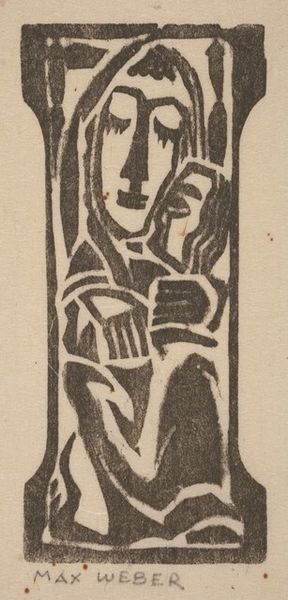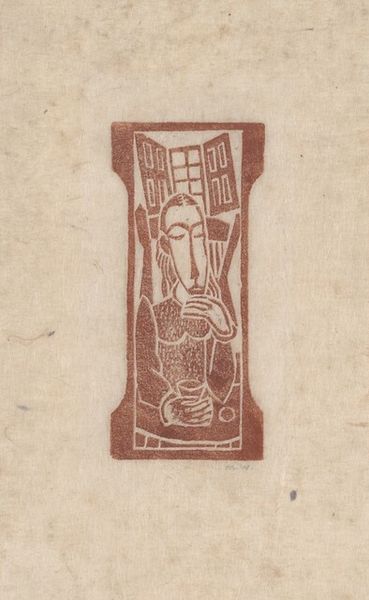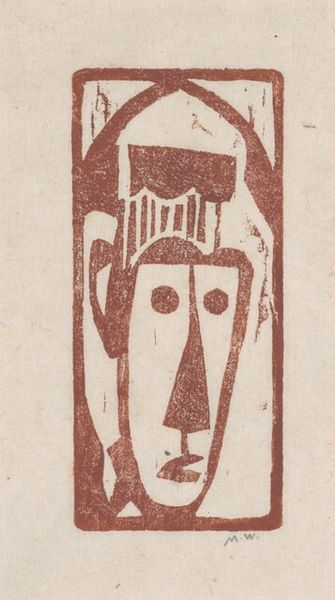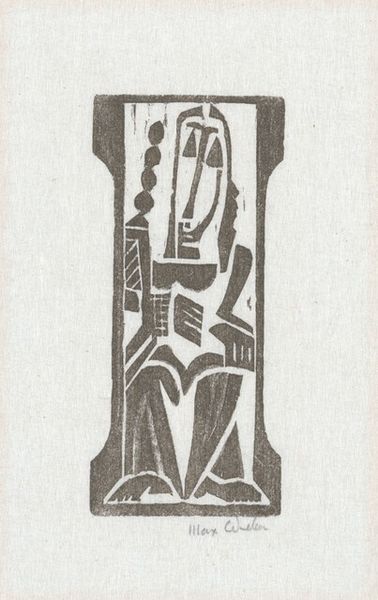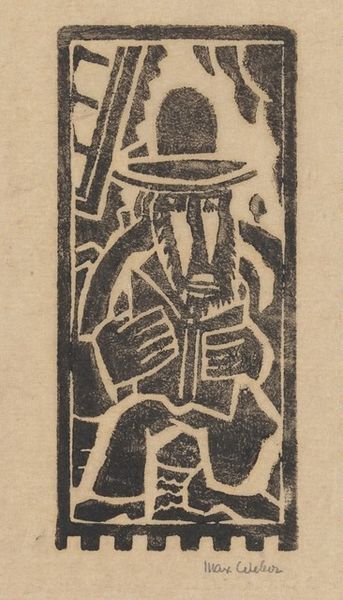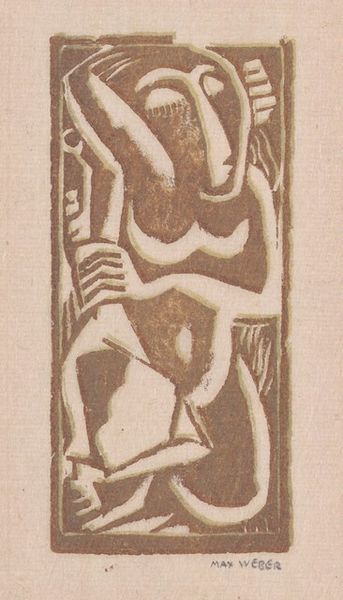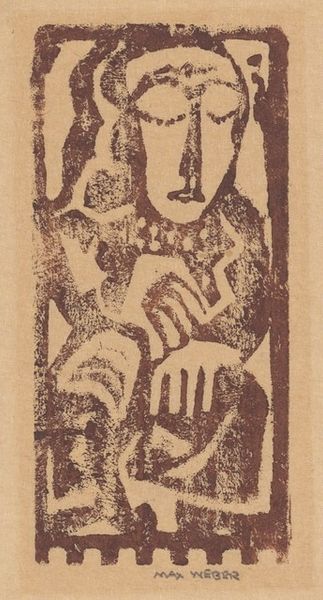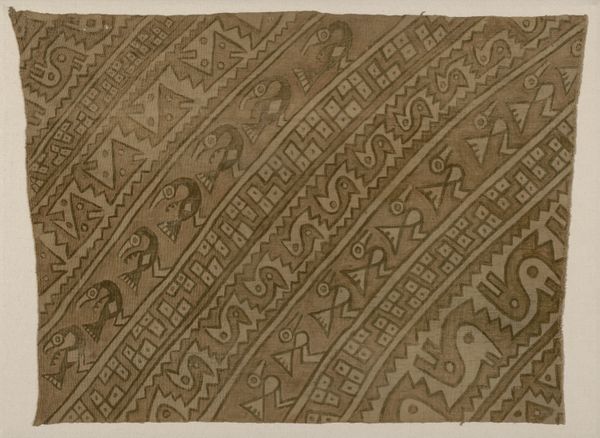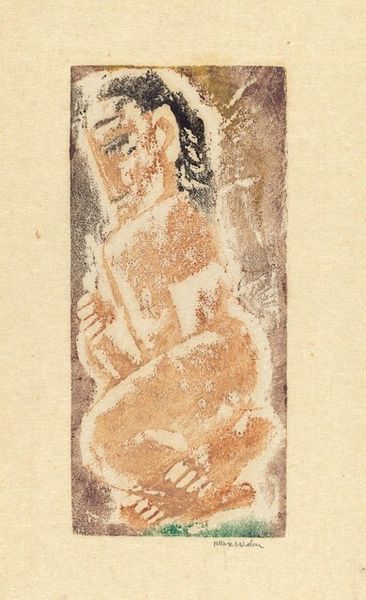
print, woodcut
#
portrait
# print
#
german-expressionism
#
figuration
#
pen-ink sketch
#
woodcut
#
line
Dimensions: image: 10.64 × 4.92 cm (4 3/16 × 1 15/16 in.) sheet: 16.83 × 11.59 cm (6 5/8 × 4 9/16 in.)
Copyright: National Gallery of Art: CC0 1.0
Editor: We're looking at Max Weber’s "Seated Figure," a woodcut print from between 1919 and 1920. The figure is highly stylized, almost totemic, and the lines are so angular. What do you see in this piece beyond its visual elements? Curator: The angularity speaks volumes, doesn't it? Weber was deeply engaged with modernist ideas circulating in the early 20th century, including those about primitivism and its relationship to the "authentic" self. Given that Weber was a Jewish immigrant from Belarus, consider how his embrace of "primitive" forms intersects with his own identity and displacement. What sociopolitical forces might have informed that interest, especially during a period marked by increasing antisemitism and nationalism? Editor: So, you're saying that his artistic choices might reflect a search for belonging or a commentary on cultural identity? Curator: Precisely. And remember, Expressionism itself was, in part, a rejection of academic art and a yearning for something rawer, more emotionally honest. What does it mean to portray the human form in such a deconstructed, almost brutal way in the wake of World War I? Could this seated figure be seen as a critique of power structures, of the dehumanization inherent in industrial society, a society that Weber himself both admired and questioned? Editor: I hadn't considered it that way. I was mainly thinking about the formal aspects, but it's so much richer when you connect it to the historical context. Curator: It always is. Consider how the limited medium of the woodcut itself—its starkness and unyielding nature—contributes to the overall feeling. The woodcut's very nature could be interpreted as resistance. Editor: This makes me want to explore more of Weber's work and the cultural conversations he was a part of. Curator: Absolutely! It’s about understanding how artists negotiate their place within, and often against, the dominant narratives of their time. Art becomes a powerful form of cultural and political commentary.
Comments
No comments
Be the first to comment and join the conversation on the ultimate creative platform.
